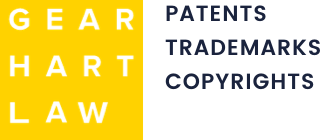Patents play a vital role in the pharmaceutical industry, protecting the innovative treatments that improve and save lives. Developing a new drug takes years of research, significant financial investment, and a commitment to meeting strict regulatory standards. Without patent protection, these efforts could be undermined, as competitors could copy breakthroughs without the time or cost of original development. For pharmaceutical companies, patents provide more than security—they create opportunities to bring cutting-edge treatments to market while safeguarding the return on investment needed to fuel future innovation.
Strict FDA Guidelines and Their Impact on Patents
The pharmaceutical industry faces unique challenges due to the intersection of patent law and FDA regulations. Securing a patent is only one part of the process; new drugs must also undergo rigorous testing to meet FDA safety and efficacy standards. Clinical trials often take years, delaying the time a drug can be brought to market and shortening the effective life of a patent.
FDA regulations don’t just prolong the timeline—they can also influence the scope of a patent. For example, changes required to meet FDA standards may impact the claims in the original patent application. This can lead to additional costs and delays as companies modify their filings to align with compliance requirements.
Moreover, the FDA approval process doesn’t guarantee market exclusivity. While the regulatory process unfolds, competitors can challenge patents, creating a high-stakes environment for innovation. This underscores the importance of careful patent planning from the outset.
Patentability Requirements in Pharmaceuticals
Securing a patent for a pharmaceutical invention requires meeting strict legal standards. These include:
- Novelty: The invention must be completely new, meaning it cannot have been disclosed or made public before the application. This poses challenges when building on existing compounds.
- Utility: The drug must serve a specific and useful purpose. This is often straightforward for pharmaceuticals but must still be clearly demonstrated.
- Non-obviousness: The invention must represent a significant step forward that would not have been obvious to someone skilled in the field.
Pharmaceutical patents often struggle with the non-obviousness requirement, especially for slight modifications of existing drugs. For instance, reformulating a drug for extended-release or improving its stability may seem incremental but requires significant scientific effort.
Applicants must carefully craft their claims to ensure their invention stands out while adhering to patent office guidelines. Failure to do so risks rejection or future challenges.
Patent Term Extensions and Exclusivity
Pharmaceutical patents face the challenge of limited timeframes, particularly given the lengthy development process. From discovery to FDA approval, years can pass before a drug reaches the market, leaving companies less time to benefit from their patents’ protection.
Patent term extensions (PTEs) help address this issue by allowing companies to recover some of the time lost during regulatory review. However, obtaining a PTE requires meeting strict eligibility requirements, including demonstrating that the delay was unavoidable and that the product’s use was subject to FDA approval.
Exclusivity periods provide additional protection by limiting generic competition for a set time. Together, PTEs and exclusivity ensure companies have a fair opportunity to recoup their investments while encouraging ongoing innovation in life-saving treatments.
Patent Litigation Risks in Pharmaceuticals
Patent disputes are a significant concern in the pharmaceutical industry, particularly due to the high value of drug patents. Generic drug manufacturers frequently challenge patents under the Hatch-Waxman Act, seeking to bring lower-cost alternatives to market. While this process is intended to balance competition and innovation, it often results in costly and time-consuming litigation for patent holders.
Even well-drafted patents can face legal challenges, especially if the claims are unclear or too narrow. Competitors claiming a patent is invalid or unenforceable can also pose litigation risks.
Defending a pharmaceutical patent requires strong preparation, as the stakes are high. A single unfavorable decision could mean losing market exclusivity and significant revenue. For companies, the key to reducing these risks lies in creating patents that are robust and defensible from the outset.
Contact Our Experienced New Jersey Pharmaceutical Patent Attorneys
Protecting pharmaceutical innovations requires careful planning and a thorough understanding of patent law and regulatory hurdles. Although these challenges can feel overwhelming, securing a strong patent is vital to safeguarding your investment and bringing new treatments to market. At Gearhart Law, we are committed to helping you protect your pharmaceutical breakthroughs. Contact us today to discuss your intellectual property needs and take the first step toward securing your innovations.

